There are only a few more days left before the most broken mages will square off piloting the most broken decks imaginable at the Vintage Championship, the most prestigious Vintage event in North America. I will be in attendance and am very much looking forward to my chance to battle one of my all time favorite formats against some of the well known old-timers, the up-and-comers, and everyone in between.
Last year I was pretty disappointed with my preparation and deck choice for the Vintage Championships, but I know the experience taught me a lot about what not to do when getting ready for a large Vintage tournament.
For one, I felt like the testing that I did ended up getting really, really inbred. How else could a guy like me end up playing an aggro RUG Delver deck? I should have stuck to my guns and played something that was actually powerful as opposed to a deck that was imagined to be well positioned in an imagined metagame.
Rule #1 for large Vintage events: don’t play a deck that doesn’t do something inherently powerful!
Now, Inherently Powerful is sort of a vague and largely subjective term, so let me clarify what I mean here. In Vintage, and particularly in a large event like the Championship which is likely to draw 150+ players, it is important to play a deck that has the capability to win games on the back of simply having really strong draws.
With a more fair deck like Delver I felt like my best draws were often at the mercy of my opponent not having above par draws, and when my opponents did have strong opening hands I was in trouble. If one’s deck needs its nut draw to even be able to play with the other good decks in the format, I would strongly reconsider playing that deck!
Just to be clear, a powerful deck doesn’t need to go off and win the game on the first turn or anything, but it does need to have draws that can straight up overpower opposing decks and win the game. I like decks that have fast closing speed, which is important in Vintage because every draw step one gives an opponent is just another chance for the bad guys to jump back into the game.
A deck like Grixis is a good counter intuitive example of what I mean by inherently powerful. It doesn’t often win the game on the first or second turn (although it is possible to do so), but it can curve quickly from Dark Confidant into Jace, the Mind Sculptor and very quickly take a stranglehold over the game. The deck also plays with spells that are super powerful, like Jace, the Mind Sculptor, Mana Drain, Tinker, Voltaic Key + Tme Vault, Tutors, and Yawgmoth’s Will.
It is very common for a deck like this to simply beat up on an opponent by overpowering them with very broken spells and draws.
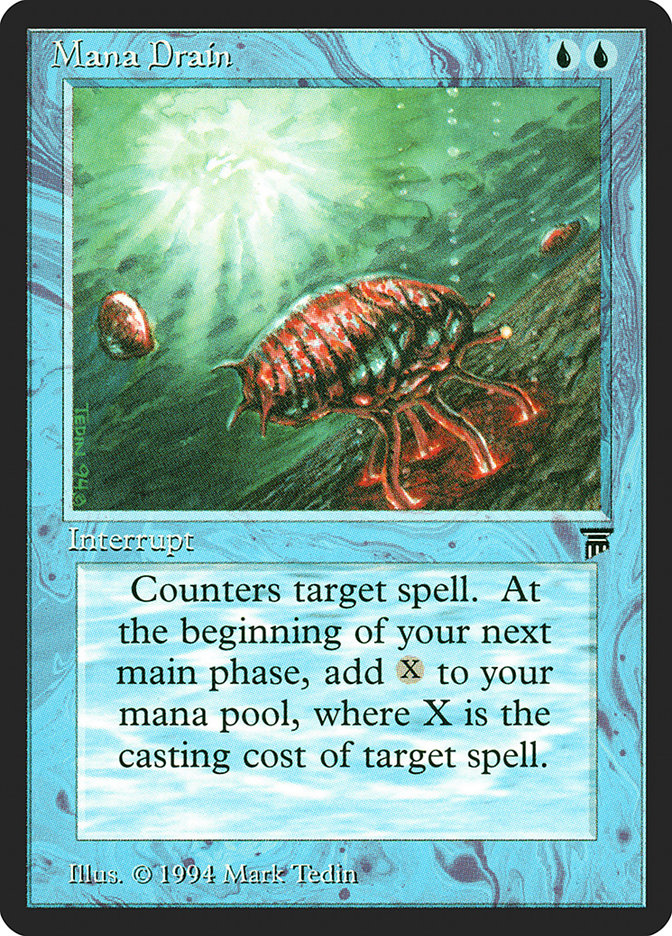
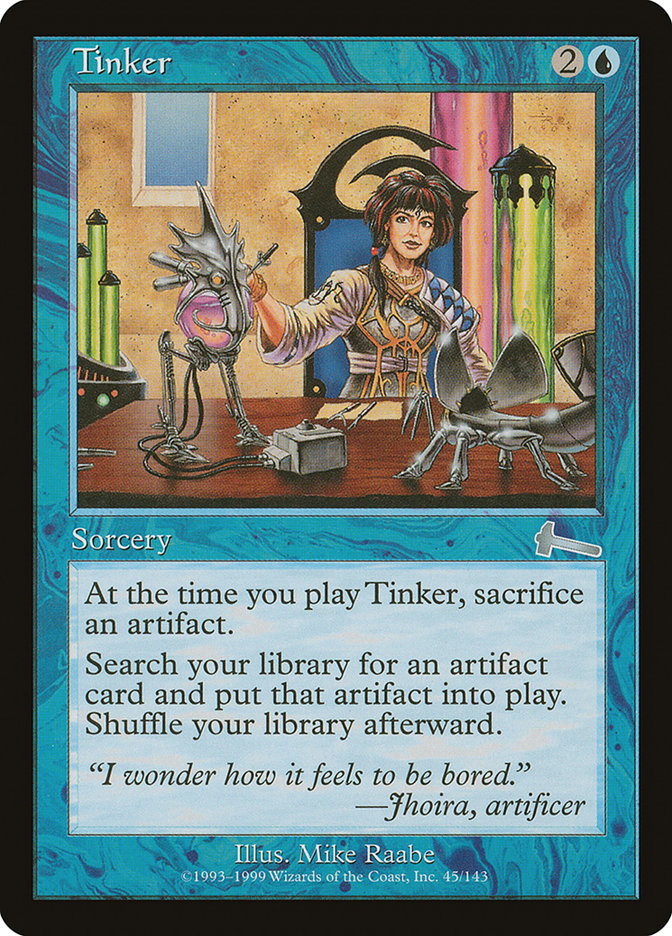
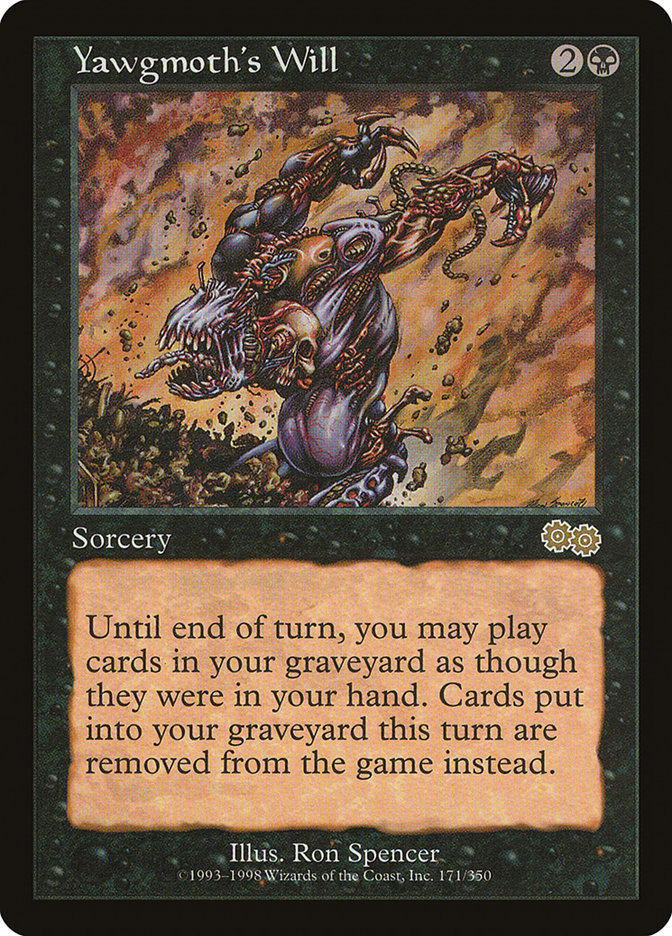
Sorry, but ALL my spells are ridiculous!
If you are planning on playing at the Vintage Championship, do yourself a favor and play a deck that can steal games for you. The Vintage cardpool is full of broken and overpowered spells, and one would be wise to play with combinations of cards that are capable of straight-up taking games from opponents.
For this Vintage Championship, I’m heading down to Washington DC a few days in advance of the Eternal Weekend in order to get some serious heads-up testing in with fellow Vintage ringer Paul Mastriano. Regrettably, I didn’t get a chance to test with him ahead of time last year and felt like both of our deck choices greatly suffered as a result of not being able to get some solid testing in.
Unfortunately, I haven’t actually gotten my testing done yet and don’t have any wicked new brews to share with all of you today. However, one thing that I do have in place, and that I feel very confident in, are the decks that will be in my gauntlet to test against in preparation to the Vintage Championships.
The four decks that I have selected to test extensively against are the ones that I consider to be the best inherently-powerful decks in the format at the moment, and if I can’t build a deck that appears to match up well against this imagined metagame, it’s likely I will just play one of these four.
All four decks that I will be talking about today meet my qualification for being respectable deck choices for a large scale Vintage tournament because they are capable of beating anything a reasonable amount of the time and are decks that I anticipate people will play and make Top 8 with.
The BUG
BUG Tempo is a deck that has been putting up very consistent and impressive finishes all year long. The deck reminds me a lot of playing a Jund-style deck, where on the surface the deck appears to be a fair deck full of cards that interact, but in reality the deck is powerful because its cards are all inherently and individually powerful while also being very versatile.
The deck is also nice because it can win small by attacking with creatures that also apply disruptive pressure and supply utility, like Deathrite Shaman, Trygon Predator, Dark Confidant, and Vendilion Clique.
Creatures (17)
Lands (17)
Spells (26)
- 1 Brainstorm
- 1 Vampiric Tutor
- 4 Force of Will
- 1 Demonic Tutor
- 1 Time Walk
- 1 Ancestral Recall
- 1 Null Rod
- 1 Black Lotus
- 1 Mox Emerald
- 1 Mox Jet
- 1 Mox Sapphire
- 2 Spell Pierce
- 1 Steel Sabotage
- 3 Mental Misstep
- 2 Flusterstorm
- 4 Abrupt Decay
Sideboard

The deck also gets to take advantage of playing a full allotment of Wasteland effects and is perhaps best positioned to make use of Abrupt Decay, a very clutch utility spell. The deck also benefits from the fact that the format tends to not have as much creature removal as other formats because of the need to interact with busted combo cards.
What is more important: Killing a Deathrite Shaman or countering a freakin’ Necropotence?!?
PROS FOR BUG:
1) The deck has the Jund 50% against the field feel to it. (You won’t outright crush anybody, but you also won’t outright fold to anybody either).
2) The cards are individually powerful and versatile.
3) Mana denial!
4) Lots of win conditions, no assembling combos necessary to win games.
CONS FOR BUG:
1) The deck doesn’t simply crush people with broken draws or broken cards.
2) The deck can’t just win in one turn, i.e. it can’t race a combo deck well and MUST interact.
3) The BUG deck will lose games where it is seemingly ahead but cannot match up the correct answers / disruption against a deck with more broken spells, i.e. BUG is up three cards against a Drain deck, but the three cards are Wasteland, Mental Misstep, and Abrupt Decay — and oops, they drew Tinker.
LOOKING TO BEAT BUG?
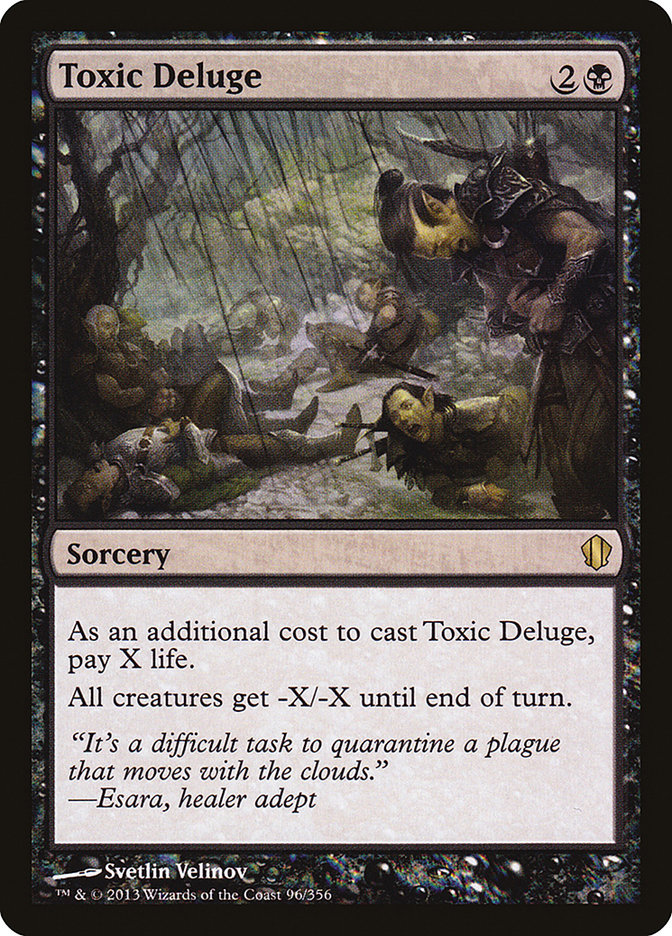
The ol’ Monty Burns special

It shouldn’t be too shocking that this card is good against small creatures!

Tinker, embarrassing Fish decks since 1998
The Dredge
Dredge will never, ever, ever, ever, ever, ever, ever go away.
Until the end of time, Vintage players will have to sacrifice large chunks of their sideboards in order to combat this all-graveyard-all-the-time deck.
Dredge is a deck that tends to over-perform at large-scale Vintage tournaments, especially when the zombies appear to have been lying dormant for some time. As soon as players get it into their heads that Dredge isn’t good, that is the moment when Dredge becomes an absolutely insane deck choice for a tournament.
Also, keep in mind that the Vintage Championship is a zero-proxy tournament which makes Dredge the only viable option for many players who can’t procure a set of Power Nine for the event. I expect Dredge to be one of the most-played decks at the Vintage Championship this year.
The other thing that Dredge has going for it is that it’s extremely powerful in a vacuum. It consistently goldfishes quickly and is as fast or faster than most other combo decks in the format if not interacted with in some kind of a meaningful way.
And keep in mind that by meaningful way I specifically mean: “Did you win the game before Dredge?” and “Did you play a card the hoses the graveyard?”
Creatures (21)
- 1 Flame-Kin Zealot
- 4 Golgari Grave-Troll
- 2 Golgari Thug
- 4 Stinkweed Imp
- 4 Narcomoeba
- 4 Bloodghast
- 1 Sun Titan
- 1 Griselbrand
Lands (13)
Spells (25)
- 4 Cabal Therapy
- 4 Serum Powder
- 2 Darkblast
- 4 Leyline of the Void
- 3 Dread Return
- 4 Bridge from Below
- 4 Mental Misstep
Sideboard

I don’t pretend to understand the inner workings of the minds of those who Dredge for fun and profit, and I don’t keep particularly close tabs on the ins and outs of the Dredge metadeck. So I can’t really tell you if they are more- or less- likely to have mana or not, Dread Return or not, or if they have Dread Return which creatures they are going to be getting back.
I’m sorry, but I just don’t know the answer to these questions.
Here is what I can tell you…
1) They will have Bazaar of Baghdad in their opening hand every time.
2) They hate it when you attack their graveyard or kill their Bazaar of Baghdad.
It’s that simple, ladies and gentlemen.
PROS FOR DREDGE
1) Most people can’t interact profitably with Dredge in game one, and many people with poor sideboards won’t be able to interact ever.
2) The deck wins very consistently and quickly.
3) People don’t need to own Power Nine to play the deck, which makes it the only choice for many players.
CONS FOR DREDGE
1) The hate to reasonably defeat the deck exists and can be backbreaking.
2) If people make a point of beating Dredge post sideboard, it is fairly easy to do. (But, that is a very big IF).
3) If you play Dredge, I won’t be your friend.
LOOKING TO BEAT DREDGE?
So, this is pretty straightforward…
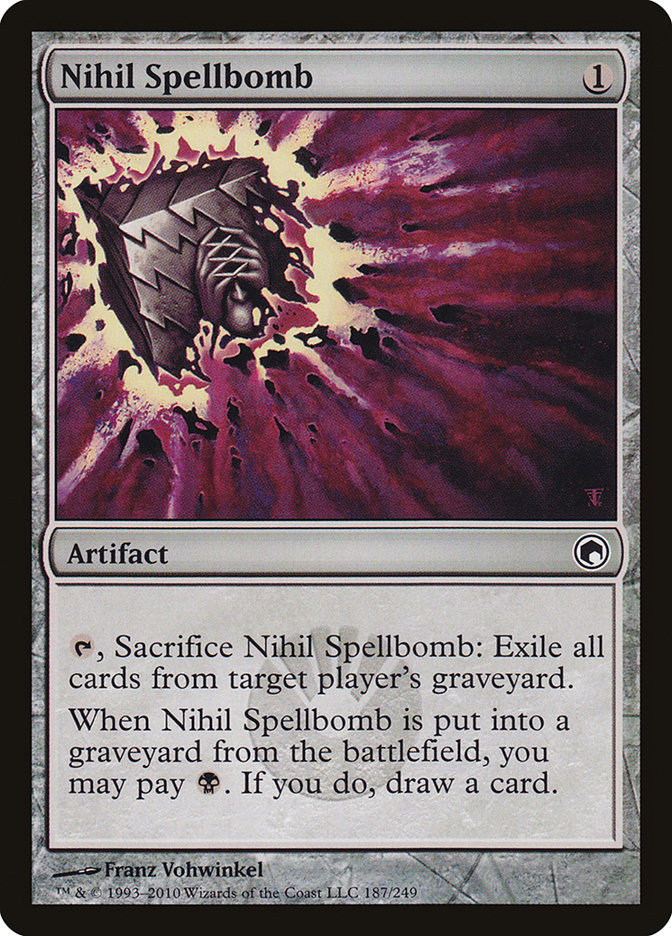

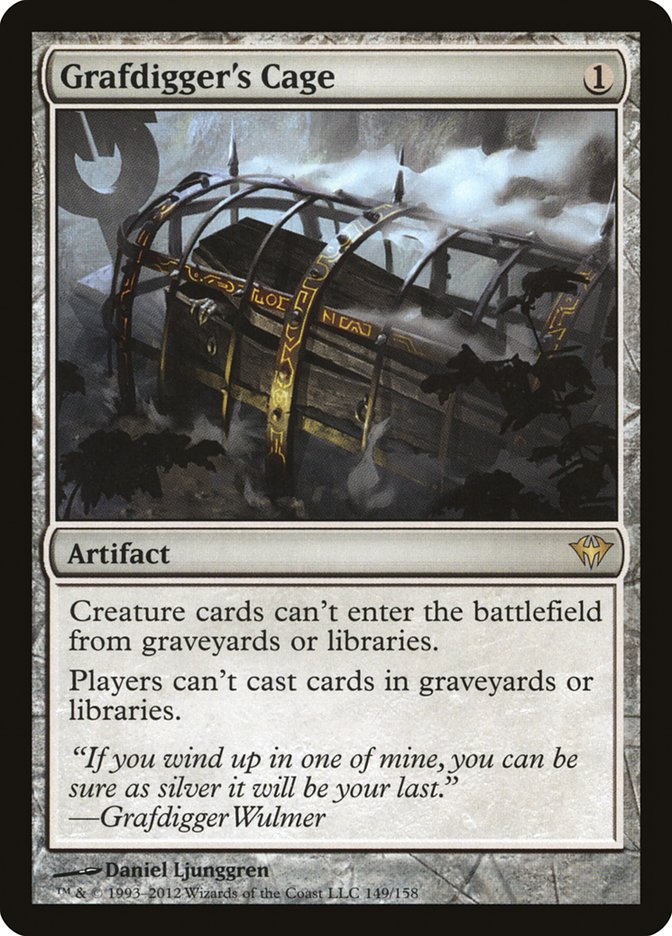
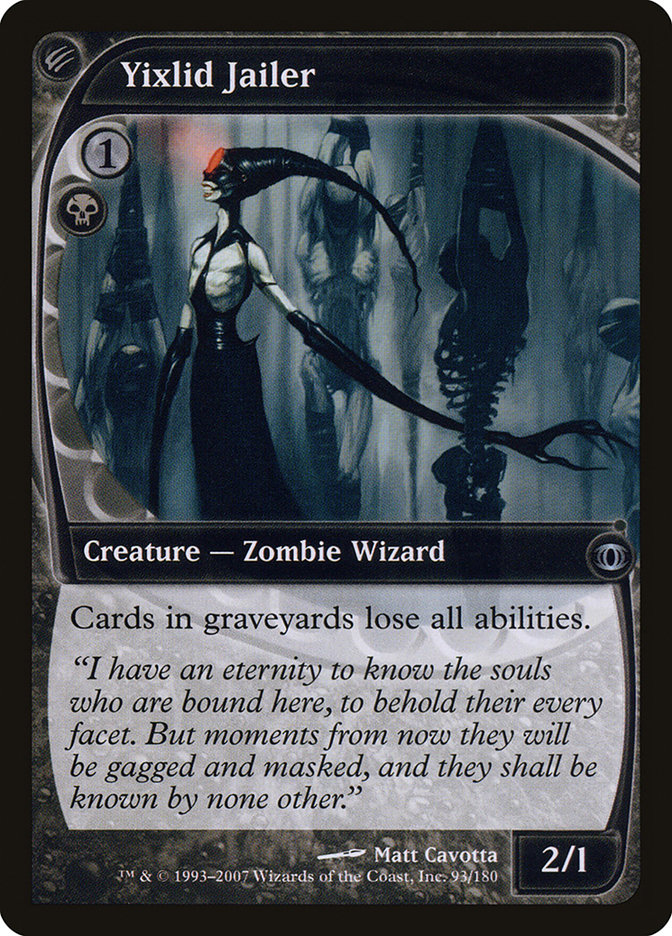
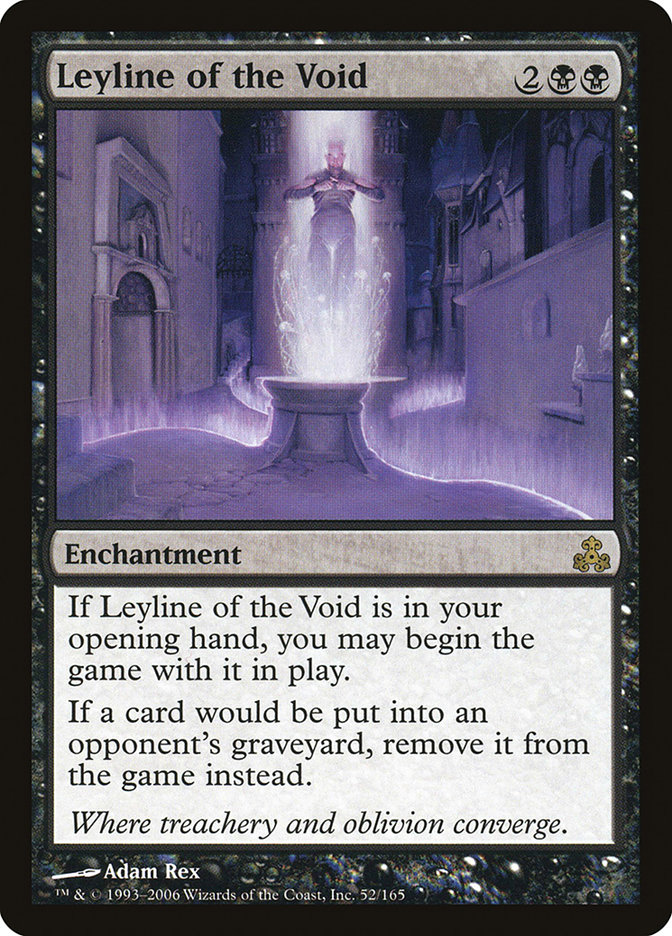
Some combination of these cards x7.
The Grixis
There is no harm in underestimating Mana Drain Control because I’m sure there will be plenty of super-fun side events for you to play in.
Mana Drain Control is and has always been the strongest and best pillar of the Vintage metagame. The archetype varies on a scale of downright unbeatable in the metagame to its low point of onlybeing the most powerful by a small margin.
Various U/X combo/control decks will probably make up the largest piece of the metagame pie for this event, so understanding how to play against these decks is going to be important. I only have so much time and space to talk about playing against U/x Drain decks, so here is my advice: If they have UU open, consider what happens if they have a Mana Drain and play accordingly…
For reference, here is last years Vintage Champion, Marc Lanigra’s, updated Grixis list that he played at GenCon two months ago.
Creatures (7)
Planeswalkers (4)
Lands (15)
Spells (34)
- 1 Sensei's Divining Top
- 1 Brainstorm
- 3 Mana Drain
- 3 Lightning Bolt
- 1 Vampiric Tutor
- 1 Mystical Tutor
- 1 Yawgmoth's Will
- 4 Force of Will
- 1 Sol Ring
- 1 Demonic Tutor
- 1 Time Walk
- 1 Ancestral Recall
- 1 Mana Crypt
- 1 Time Vault
- 1 Merchant Scroll
- 1 Tinker
- 1 Voltaic Key
- 1 Black Lotus
- 1 Mox Emerald
- 1 Mox Jet
- 1 Mox Pearl
- 1 Mox Ruby
- 1 Mox Sapphire
- 1 Spell Pierce
- 1 Nihil Spellbomb
- 2 Mental Misstep
Sideboard

Fire Covenant can easily be replaced by Toxic Deluge.
In fact, I think the card is probably going to be a card that sees a lot of main-deck action this year.
PROS FOR GRIXIS
1. The deck is full of extremely powerful restricted cards and combos.


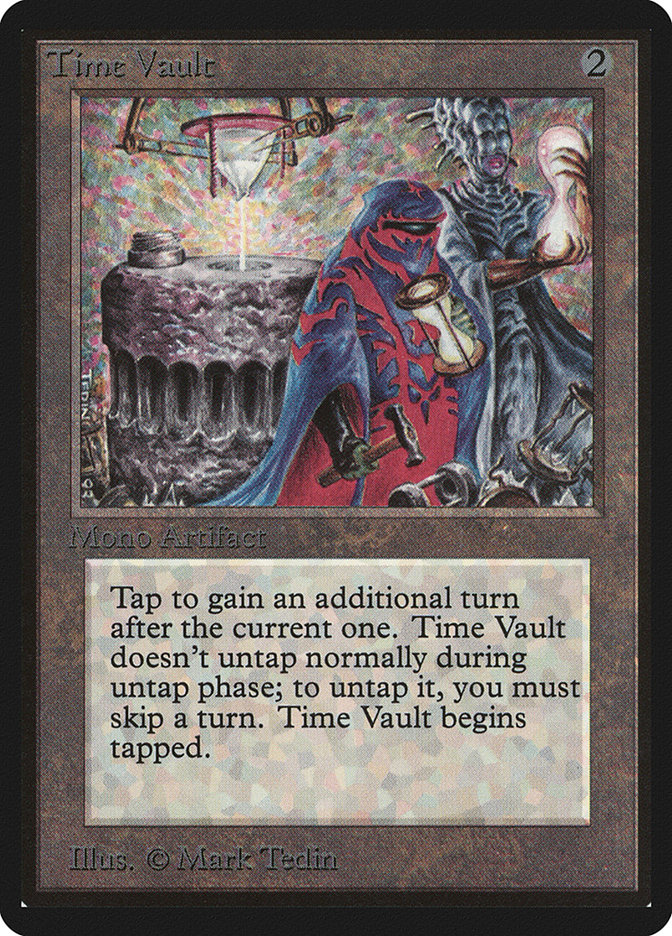
2. The deck has a sick supporting cast.



3. The deck can interact with opponents, but can also very quickly flip the script and end the game via becoming a combo deck.
4. The deck’s good nut draws are nearly unbeatable.
CONS FOR GRIXIS
1. The deck can struggle with opponent’s who can attack its mana via Null Rod, Wasteland, or Sphere effects.
2. The deck is basically a known commodity so everyone in the room will have a plan against Grixis and familiarity with playing against the deck.
3. The deck is a big underdog on the draw against most Workshop decks*
4. Cavern of Souls.
*Vintage Affinity is a pretty big thing now and Grixis matches up better against this deck than typical Prison Workshops that are more geared toward mana denial. Vintage Affinity is also good against Prison Workshops, which could force those decks to become less hateful toward blue decks. If the stars align, there could theoretically be a Vintage metagame where Grixis is good against a large hub of the Workshop population.
LOOKING TO BEAT GRIXIS?
Grixis is a pretty mana-hungry deck and the best inherent way to win against a Grixis deck is to attack its mana somehow – ideally, from multiple angles. A deck like BUG that has Wasteland and Abrupt Decay, or MUD that has Wasteland and Sphere effects, are the best way to take away a Mana Drain’s ability to go over the top.
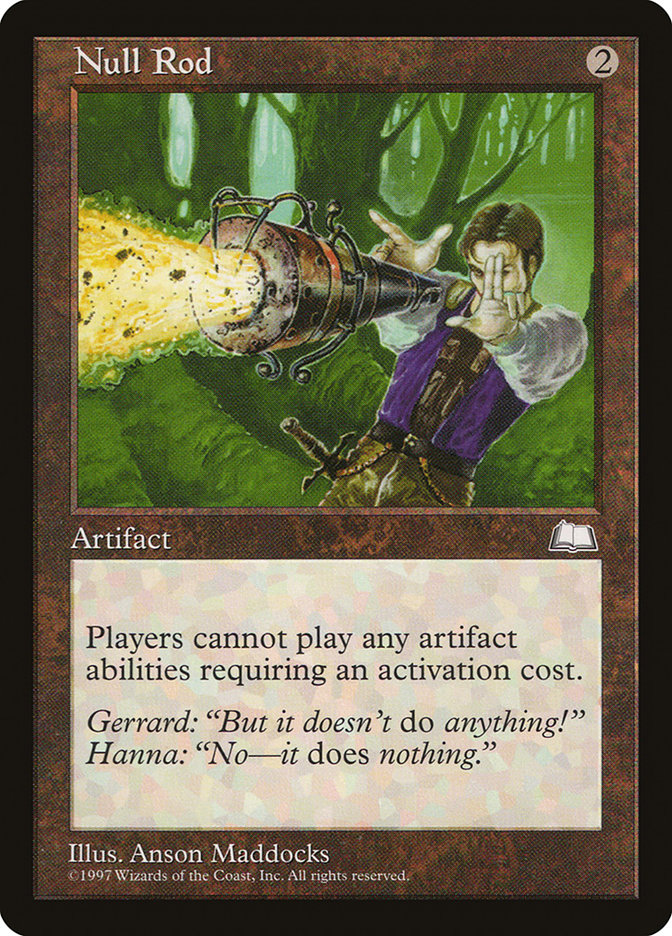
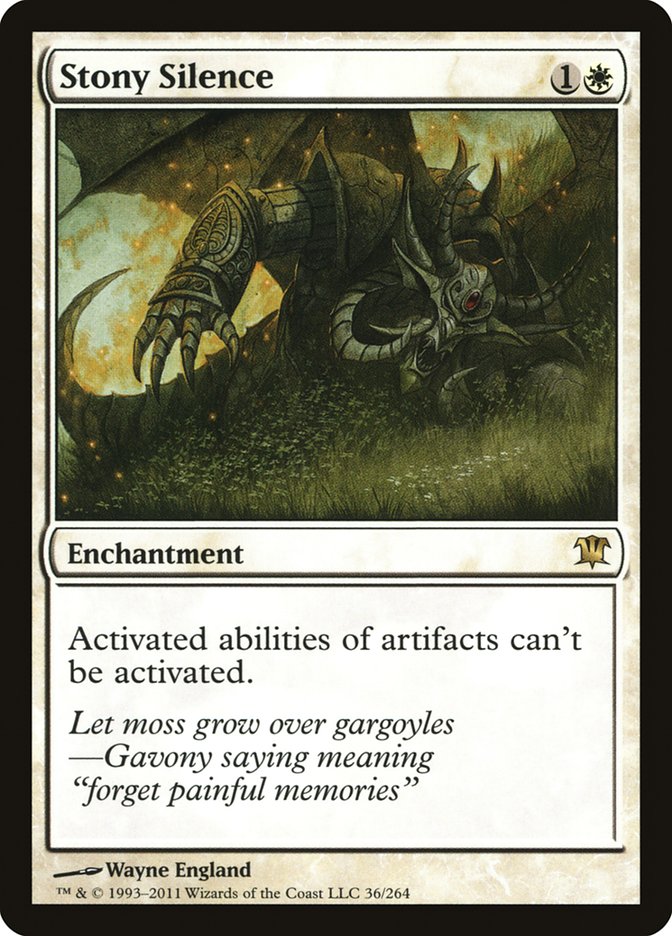
Null Rod is such a turn-off…
I think Null Rod is a really well-positioned card going into the Vintage Championship, and is something that I am looking forward to trying out.
Keep in mind that decks that wouldn’t typically play a card like Null Rod can board it in to squash matchups where it clearly is the best card against a deck. I remember I sideboarded Sphere of Resistance in Control Slaver for quite some time and it was very good against the decks it was good against.
I would guess that any deck planning to attack with creatures as its path to victory should want to have some number of Null Rod for this event, especially because the card is also insane against…
The Affinity
Vintage Affinity is the new deck that has been literally all the craze in the format over the course of the past few months.
The deck is a Mishra’s Workshop deck that attacks for a lot of damage very quickly. The cool thing about Vintage Affinity is that it basically steamrolls all of the other Mishra’s Workshop decks in the head-to-head match up. While those decks have a bunch of Spheres and disruptive prison cards meant to hold blue decks in check, the Vintage Affinity deck is like, “Oh, you are going to durdle around and do nothing? So, I guess I’ll just play a billion guys and kill you now.”
While the deck can’t lock down blue decks right from the onset like a traditional MUD deck, it can still steal games by going very broken very quickly and getting right down to the business of getting them dead.
The fact that the deck can very easily abuse Skullclamp and simply outdraw blue decks is both sickening and awesome at the same time. From top to bottom, the deck is just built to go fast and go big, which makes it a strong contender in my book to make Top Eight at the Vintage Championship.
Creatures (21)
Lands (13)
Spells (26)
- 1 Mana Vault
- 1 Sol Ring
- 1 Mana Crypt
- 4 Skullclamp
- 1 Memory Jar
- 2 Cranial Plating
- 4 Genesis Chamber
- 1 Black Lotus
- 4 Tangle Wire
- 1 Mox Emerald
- 1 Mox Jet
- 1 Mox Pearl
- 1 Mox Ruby
- 1 Mox Sapphire
- 2 Batterskull
Sideboard

I like that the Vintage Affinity deck is super-proactive and has a lot of tools that are going to play in a lot of different scenarios. It gets to play with most of the best cards that go into other Workshop decks but has more ways to actually attack and generate advantage besides ‘just’ get ahead and stay ahead. The Vintage Affinity deck seems like it can come from behind, draw ten cards, and suddenly be winning from out of nowhere.
PROS FOR AFFINITY
1) Fantastic matchup against other non-Affinity Workshop decks because Affinity has way more threats, cards that matter, and far fewer blanks.
2) The deck is proactive and has lots of ways to actually win.
3) Arcbound Ravager gives the deck a pretty reasonable Game One out against Dredge.
4) Lots of broken oops, I win draws with Skullclamp, Gaea’s Cradle, and Workshop.
5) Lodestone Golem is b-a-n-a-n-a-s
CONS FOR AFFINITY
1) Less prison cards means fewer cards to check Mana Drain decks.
2) People know better than not to pack the hate for Mishra’s Workshop decks.
3) Because Affinity has fewer ways to stop opponents from casting spells, it is more likely they will be able to cast their hate cards post-board than against traditional prison.
4) Hurkyl’s Recall is really good against this deck.
5) Null Rod is very good against this deck.
LOOKING TO BEAT AFFINITY?
The way to beat this deck is the same way that everybody has always beaten Affinity-style decks in every format where they have ever existed – play some hate.
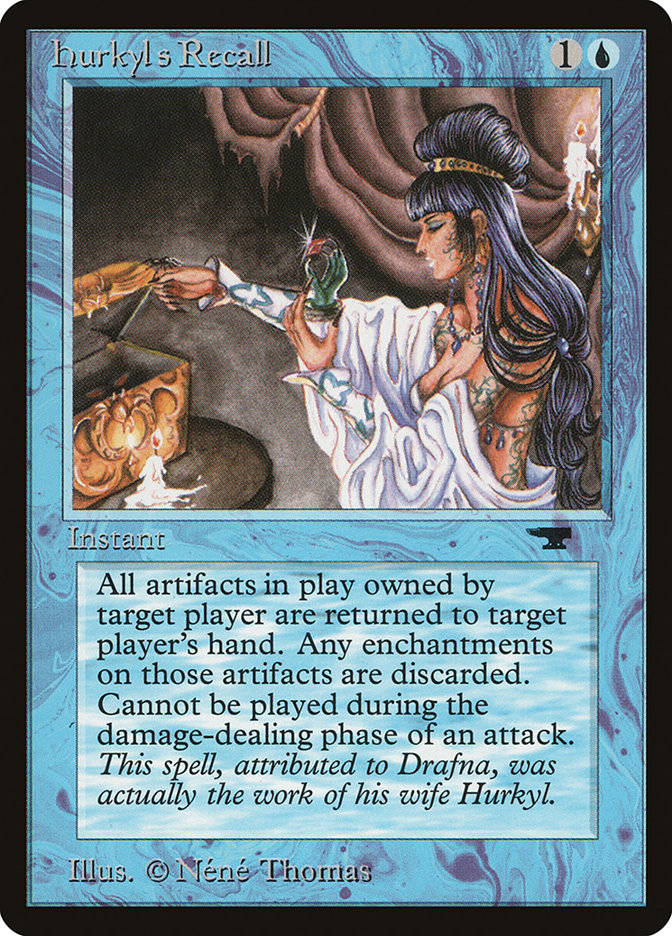

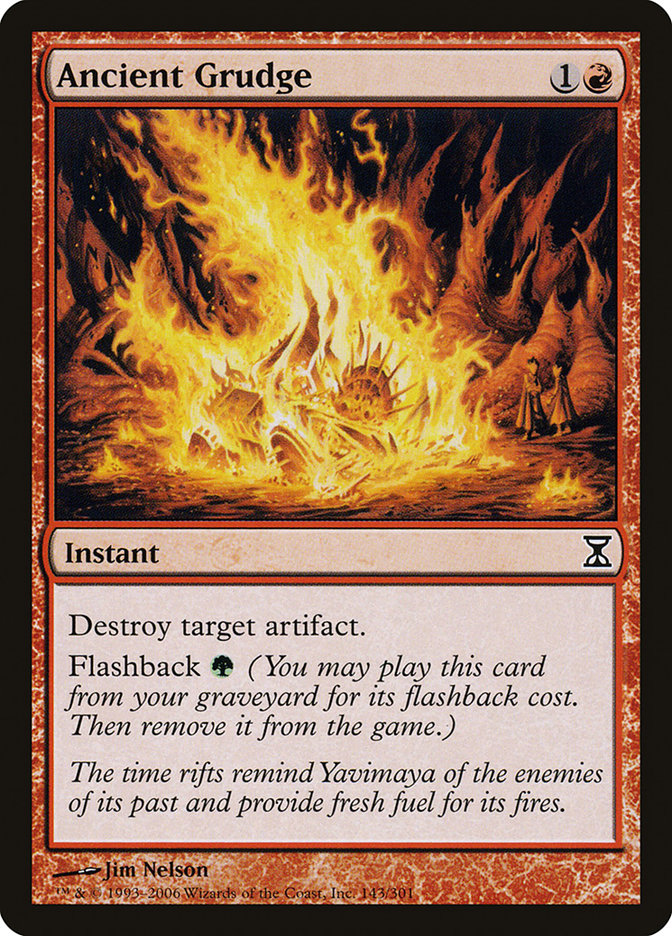
The Argothians told me to tell you, “Hey.”
Anything that kills an artifact is going to be good against this deck, as are decks that can outrace the Affinity deck with a combo kill. One good point about attacking the Affinity deck as opposed to a prison MUD deck is that instant-speed removal is going to be at an even higher premium, since being able to stop with a Skullclamp or interact with a Ravager in combat is a really big deal. Obviously, instants are better than sorceries – but this is one deck where Nature’s Claim is going to likely be much better than Ingot Chewer.
Not In The Gauntlet (But Still On The Radar)
So, these four (BUG, Dredge, Grixis, and Affinity) are the decks that I am going to spend the brunt of my activity trying to beat. I think these are decks that will show up in high numbers and are likely to be among the most competitive and successful strategies in the room.
However, these are not the only foes that I am interested in defeating.
COMBO – Burning Oath (and other Oath of Druids decks) and Doomsday.
I think that these decks are both pretty scary to play against because they are capable of very fast and very powerful wins. I’m not sure that they are consistent enough or resilient enough to endure 7+ rounds of Swiss and a Top Eight, but with some nice pairings and good draws I could see one of these decks having a good shot of winning the tournament.
For combo decks like these, I don’t typically invest a ton of time into testing against them but I try to keep them in mind with my sideboard by having cards that splash damage these strategies. Cards like Grafdigger’s Cage, Nature’s Claim, Thoughtsieze, or Flusterstorm are fine cards to be bringing in against lots of combo decks in a pinch.
WORKSHOP – MUD Prison or Forgemaster MUD
I feel pretty confident that Affinity is going to be the deck I am more likely to play against at Vintage Champs, but one still has to be good against the mana-denial decks. There are still going to be a lot of people who opt for the better matchup against Mana Drains.
I would be shocked if the vast majority of non-Workshop players didn’t have several ways to destroy an artifact for one mana in their sideboard. I would not be shocked if all of the people who did not have 1cc ways to interact were playing side events by round five.
CREATURES – Humans and Hate Bears, Oh My!
My thought process is that whatever cards I am sideboarding to be good against BUG should almost certainly get brought in against these types of decks. Objectively, I feel like the kinds of pressure these decks bring are mostly inferior to what one would get from an Affinity deck, and that the utility is lacking compared to a BUG Deck.
However, I still respect the power of a Null Rod and/or Stony Silence and wouldn’t want to get caught without an answer.
Sideboard some Toxic Deluges and call it a day.
MANA DRAIN CONTROL – Landstill, Esper, Keeper, etc.
All of the Mana Drain decks are basically the same thing. I know, I know, the purists are going to complain about how the subtle nuances of each archetype make these decks very different and unique entities.
All lies.
All of these decks want to draw cards, dream crush with Mana Drain, stick a Jace and ride it to victory. All of these decks have the ability to tutor for very powerful spells that will do very broken things and/or remove an opponent’s opposition of the Drain player’s ability to do broken things.
Ideally, I would want whatever sideboard cards that I have for one of these decks to play against everybody. Cheap counters that hit Mana Drain or Jace, the Mind Sculptor are always welcome. Red Elemental Blast is my personal favorite. If you can’t be REB’ing you can be Thoughtseizing. If you can’t be doing either of these things, I really hope you are playing Workshop or Dredge!
GUSH – I think there will be a non-trivial amount of Gushes at the tournament, which is something to keep in mind if one plans on playing an opposing blue deck. Gush tends to be very good against blue decks but suffers against Workshop decks with a lot of Sphere of Resistance-type effects.
If more people are playing the Aggro Workshop decks like Affinity instead of MUD decks, that could make Gush a better overall choice for the tournament. Still, playing Gush is a pretty big crap-shoot since their Workshop matchups should be very tough.
Flusterstorm is probably the best option against Gush, but I also really love Red Elemental Blast against them.
Also, it is really awkward that Abrupt Decay can break up their combo before it ever gets going.

Goodbye Fastbond, we barely knew ye!
Like I said, people will be Gushing at Vintage Champs; the good news is that most of them won’t have made it past Chapter 68 in their GUSH MANUAL and thus won’t be able to pilot the deck well enough to leverage the advantage it ought to provide. The bad news is that Rich Shay and Stephen Menendian will probably be playing the deck and crushing with it.
It is finally time to bring the Power Nine out of the closet and go to battle.
I’m looking forward to seeing all the Vintage friends I’ve made over the years as well as making some new ones at the Championship this weekend, so don’t hesitate to say “hello,” or tell me that my insights about the Vintage restricted list are terrible.
Let the games begin.
Follow me on twitter @briandemars1
